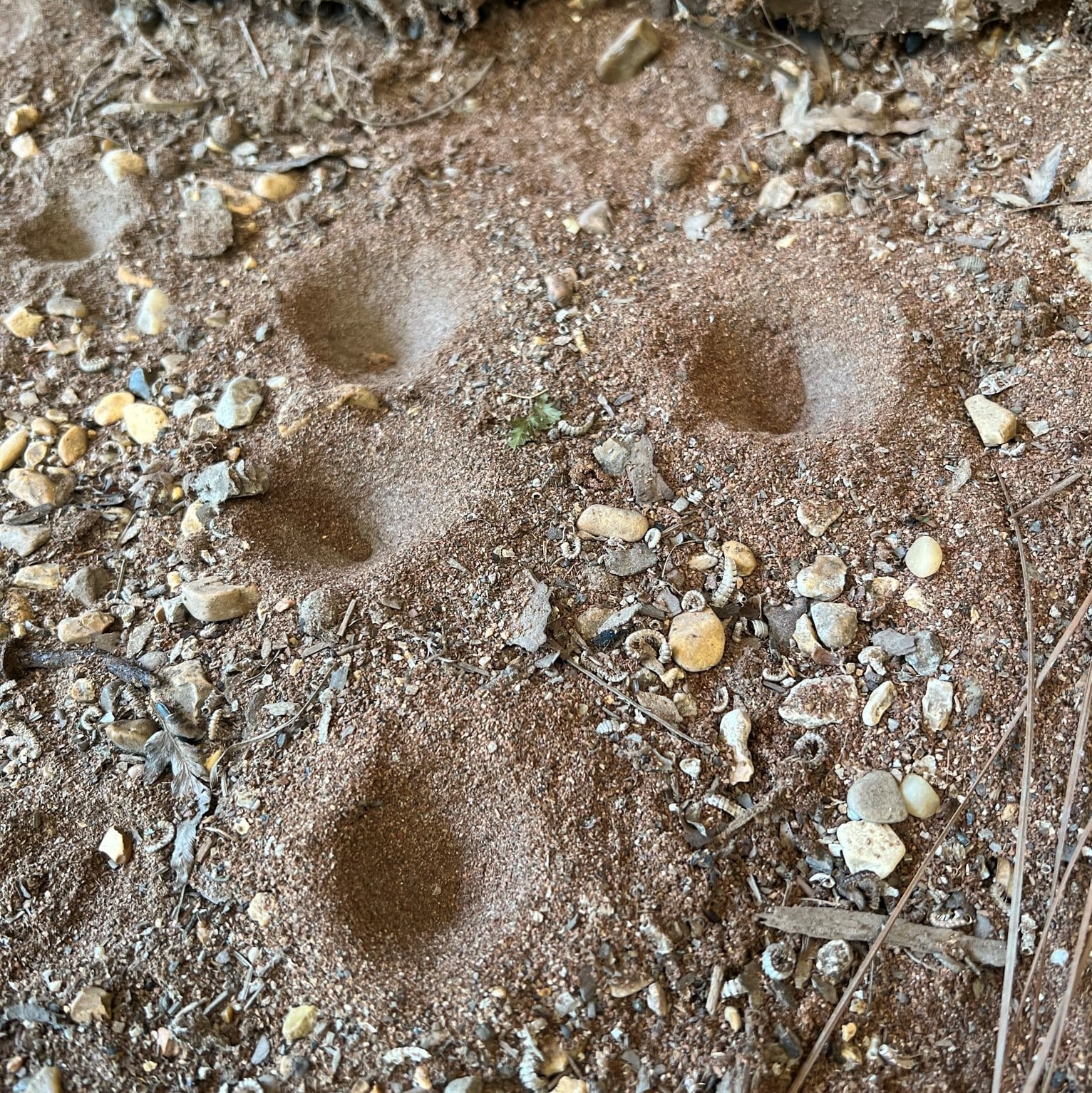The ways that carnivorous animals hunt, capture, and devour their prey can be brutal. This is especially true for insects that have inspired many a monster in science fiction horror movies. The larvae of Ant Lions are as good an example as any, likely the inspiration for the Sarlacc Pit Monster of the Star Wars movies.
Ant Lion adults, on the other hand, are elegant creatures, like the Pleasing Picture-winged Antlion, recently observed on my porch. This is one of the largest species known from the U.S. An estimated 2,000 species are found worldwide, but as with many groups of insects, that number is likely low. So much to learn about the many creatures around us.
Adults are short-lived (days to 2-3 weeks), some being predaceous, some feeding on nectar and pollen, and others not feeding at all. Ant Lions belong to the insect Order Neuroptera (nerve or net-winged insects), named for their clear wings with distinctive venation. This group includes the more commonly seen Lacewings – the small, green or brown lace-winged insects that are attracted to porch lights.

The larval forms of Ant Lions are the most commonly encountered life stage of this group because of the distinctive, funnel-shaped sand pits found in sheltered sandy patches around your home. The larvae are hidden in the bottom of the funnel, with their large, tooth jaws spread widely, waiting for any hapless critter to fall into the pit. Their response is rapid, clamping down and injecting venom to paralyze the victim. Digestive juices, injected into the prey, dissolve tissues that are then ingested.
Many kids of older generations, and hopefully some of today’s youth, have had fun getting the larvae to strike at a twig poked into the bottom of the pit. Ant Lion larvae are commonly called doddle bugs because of what appears to be random digging that they undertake when trying to rebuild their pits after being hassled by a child.
But not all Ant Lion larvae dig pits. In the case of the Pleasing Picture-winged Antlion, its larvae are found buried in the loose organic material found in the bottom of dry tree holes, especially in Live Oaks. These larvae can chase down prey in these confined spaces without the need for a pit.
As with many of my stories, this one is about a common group of insects that are not generally seen, but present, nonetheless. Watch for the adults this time of year next to your porch lights, and seek out the undisturbed, bare sandy soil patches to find the larvae. If you can, take along a child and have a little fun with these tenacious creatures. As they reestablish their pits, they actively flick sand about like a madman – fun to watch and sure to inspire a giggle or two.
Hope to see you in our great outdoors!